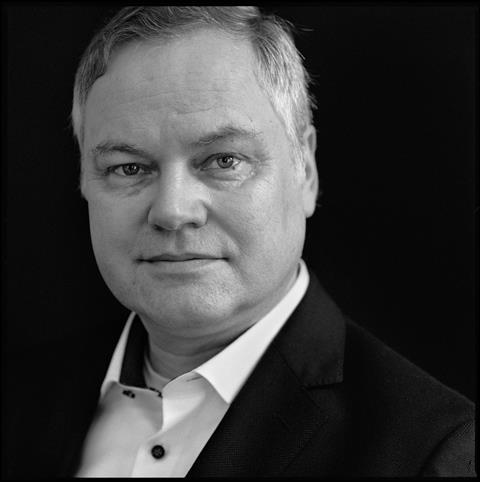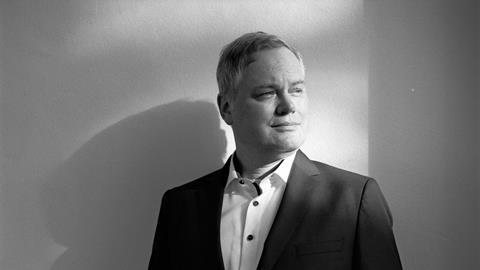Matthias Bickelhaupt’s research is literally rewriting chemistry textbooks. ‘I dare to say that some models are pointless.’
The attentive reader will have seen the name or the work of Matthias Bickelhaupt, Professor of Theoretical Chemistry at the Vrije Universiteit Amsterdam (VU), several times in C2W | Mens & Molecule over the past year and a half. These articles were often accompanied by phrases such as ‘paradigm shift’, ‘misguided models’ and ‘shattered rules of thumb’. This is because Bickelhaupt is concerned with the underlying mechanisms of chemistry. Thinking about chemistry goes back a long way, he explains. My first memory of chemistry was the 1973 oil crisis. Suddenly you had to pay for plastic bags, and as a child I thought that was very upsetting. At primary school I was told that chemists would find a solution. My father, who was an organic chemist, agreed.’
‘It doesn’t just happen; it’s difficult to arrive at something simple.’
Chemistry was also Bickelhaupt’s final choice – ‘it communicates the most with the other sciences’ – resulting in a major in theoretical chemistry, a minor in organic chemistry and, as a bonus, physical chemistry. ‘For me, organic chemistry is the chemical tree that connects all the other chemical branches’, says Bickelhaupt. ‘But my motivation is still “the big why”: I want to know why phenomena work the way they do, and you can find that in theory.’
What was the defining idea that helped you at the beginning of your career?
’It started with the realisation, which I still strongly support, that chemists are developing the right tools to change the world. This is in stark contrast to what you hear today, that chemists are destroying the world. No, the tools are being misused, but chemists are making sure it doesn’t get out of hand.

‘After several post-docs and a Habilitand in Germany, I got a permanent position at the Free University of Amsterdam. Normally, as an early-stage researcher, you have more ideas than money, but I had already received a Vici grant in 2002, so I was able to start almost all my ideas at once. They were mainly about elementary bond theory, but also about catalysis, biochemistry and reactivity, always grounded in chemical theory.’
Is it true that you were dissatisfied with the state of theory?
’For a long time, physical organic chemistry was like this: make observations based on calculations, do experiments and make hypotheses. The latter were plausible in themselves and gave some guidance, but they did not look beneath the surface, which is where my interest lies. Calculation is the starting point, but analysis gets you to the core.’
The way to that core is through quantum chemistry, which has a reputation for being elusive and complicated. But you use it effectively.
’There are a lot of theorists these days who are mainly interested in making quantum chemical approaches more precise. And it’s fine to spend a lot of time on that, but you end up with an increasingly complex numerical machinery that seems unfathomable. Instead, one of the greatest challenges of theoretical chemistry in the 21st century is to find the guiding principles in your formulae, the patterns in the whole that determine the final outcome. Our research group stands out because we try to identify the dominant patterns in the complexity of quantum chemistry and then explain them clearly. This does not just happen; it is difficult to arrive at something simple.’
How do you choose which model to use?
’A model has to be accurate, but it also has to make causal connections between the concepts of individual molecules and how they can interact. We use MO theory [molecular orbital theory, ed], where the concepts include orbital overlap and energy gap. If you look at these essential concepts, the MO theory model becomes remarkably simple. The corresponding formula for the HOMO-LUMO interaction or general donor-acceptor interaction [ΔE = S2/Δε, ed.] could be thought of as the chemical version of E = mc2. Perhaps not as universal, but very simple and determinant of behaviour.
’I expect that in the future you won’t have to do trial and error’
‘There are other models, such as the topological model, but they do not explain why an interaction becomes strong or weak. These are models that I dare to call pointless – not wrong! – but pointless.’
Some researchers do fundamental chemistry for fundamental chemistry’s sake. It seems to me that you also like to look for the practical side.
‘I am incredibly curious, but my conviction since childhood has always been that chemistry can solve practical problems. Curiosity and practical research are two independent drives, yet both are necessary. Our project at ARC CBBC [industrial-academic partnership for greening chemistry, ed.] is a good example of this [see this article, ed.]. We are working with Nouryon [a spin-off from AkzoNobel, ed.] to develop new polymer initiators. This ties in with our bonding theory project, where we try to understand why a bond is strong or weak. Nouryon wants to use this knowledge to make better initiators. In this way, basic curiosity-driven research corresponds directly to practical, problem-solving research.’
How will the fundamental and the theoretical change organic chemistry?
’I expect that in the future you won’t have to do trial and error, neither experimentally nor theoretically. Modern theoretical chemistry tools are already increasingly revealing mechanisms, so we know why things happen and therefore what you need to do to achieve something.
’The useful core of the current AI hype will help. We ourselves are investigating whether AI can be trained on mechanisms rather than phenomena. So that the AI learns what the different possible binding mechanisms are. Then it can help scientists to elucidate mechanisms faster and with less data. This is also why I think the textbooks will be rewritten within the next 10 years. In terms of the theory of chemistry, there will be a ”chemistry 2.0”.’

A few times in the magazine we have had the opportunity to see some previews of ‘Chemistry 2.0’ from your group. Do you urge your colleagues to use your new theories in the classroom?
’There are quite a few who do, but they are still a minority. But that’s how we’re going to get the proverbial tanker moving in the right direction. We already have contacts with textbook authors, such as Michael Smith, author of March’s Advanced Organic Chemistry, who has already included many of our findings in his book. We’re also part of a group in the Netherlands considering whether we could write a new organic chemistry textbook ourselves. It will definitely happen, but it will take time. Not only to overcome mental resistance to new discoveries, but also to rewrite chapters of existing books.’
’One problem with Plan S is that the number of bad journals has skyrocketed’
Thus you are kicking over sacred chemistry cows and initiating paradigm shifts, but to what extent are these new perspectives sustainable in the long term? Don’t your ideas just become new ‘cows’ for someone else to kick over?
’I am not afraid of that, because our models are based on the laws of physics. Molecular physics is not going to change. We also show causal relationships with our models, so I expect them to hold up reasonably well. What might happen is that someone will come up with a more convenient model, but if so, I welcome that.’
Something else: Open Access. A few years ago you said that Plan S would “upset the balance of the scientific community”. Was that concern justified or not?
’I think it has had a disruptive effect, but it has been absorbed – better than I thought – by the scientific community. The VSNU [Association of Cooperating Dutch Universities, ed.] is doing a good job of capturing the costs of open access publishing and making it happen. What we were afraid of was that you would get incredibly complex procedures, so that it would take a lot of time and effort to publish. It hasn’t been too bad. But I wonder if it has become cheaper or if we have actually started to pay considerably more. It may also be that it has become more difficult for scientists from less fortunate countries to publish. I think the ability to publish is more important than everyone being able to read everything for free.
‘Another problem is that the number of bad journals has exploded. So those who can pay can always publish mediocre work. In my opinion, a kind of parallel scientific community is developing where people cite each other, which gives these journals a reasonable impact factor. That’s why you have to look at the impact factor carefully, because it has lost some of its power as a result of open access. I myself would be a big advocate of ‘diamond open access’ for good association journals like those of Chemistry Europe, ACS or RSC: government bodies pay the publication costs.’
In mid-2020, Bas de Bruin said in an interview that he was somewhat reassured about Plan S because the big deals with the VSNU and society journals had been secured. But he was still worried: what would happen in 2024, when the big deal contracts expire?
‘I couldn’t say for sure. Ideally, things will continue as they are now, or better still, in a simplified form. If we in Europe want everything to be open access, then we should pay the good journals to make it happen. Let the state or Europe pay for open access. The money now comes from scientists, and therefore mostly from taxpayers. We should be able to do this more easily. For example, the Royal Society itself keeps Chemical Science open access and pays for it out of the income from its other journals. They believe that if they do it that way, they will have a mega-impact. So if we want to have a mega-impact, we have to do something similar. This may well be possible with Chemistry Europe’s new flagship journal: ChemistryEurope. For the first few years, it will be open access for everyone. I think this will give us the very best in science: easy to publish, easy to read, but very rigorously selected and therefore the very best there is available.’













Nog geen opmerkingen